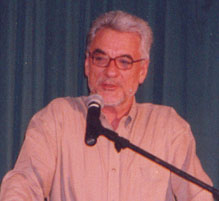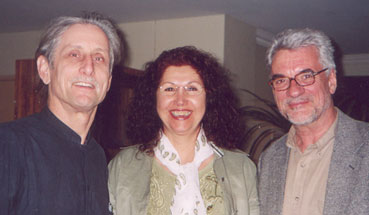Previous Event:
International Sufi Symposium
The Unifying Role Of Mysticism
October 2004
Dr Buehler first looked at the modality of religion that legitimises
power and said that the results were that “more people
have been killed in the name of religion than anything else”
and that with today’s technology this was a suicidal
path to take. He then said that on the other hand “probably
even more people have been healed in the name of religion
than by anything else… this healing is very often through
the ‘mystical aspect’ of religion, the one that
is often associated with love. In Islam this is called Sufism.”
He said that “across mystical traditions the goal is
a unitary state of consciousness, but that this is only one
dimension of spiritual development – it is crucial that
one also improves one’s character and becomes a better
person in the human community. Ihsan (to make beautiful)
is concerned with human character traits. The Prophet (pbuh)
used to say: “O God, You have made Your creation
beautiful so make my character beautiful too.”
Since all the divine names and attributes are already built
into our primordial being, all that needs to be done is to
eliminate the negative traits, polish the heart and purify
our egos. Much easier said than done.”
“Adab is also very much about human character
traits. We usually think of adab as outward behaviour, but
it is not always realised that adab also includes the inner
domain of doing what is beautiful. In a real sense adab combines
the doing with a manifestation of the beautiful. To embody
the beautiful is to embody the qualities of God. It should
be clear that ihsan leads to love – indeed this is the
lifeblood of any religion. It was and still is the expression
of love in the hearts of believers that very often attracts
people to Islam or other religions. Without love there is
simply empty practice.” A goal of ihsan is “to
worship God while seeing him in one’s heart.”
Sincerity is also needed, to do things for God’s sake
alone, not for outer approval or reward.

Dr Arthur Buehler
He went on to explain that “God is limitless grace
and incomparable love; this love pervades everything and it
is the love that is God’s love” and that “only
a love that surrenders is a true love.” In contrast
“the love that we manifest usually is selfish in that
we expect something in return.” It is about neediness
and if we do not get what we are looking for our love disappears.
“Indeed how often is our love for God like this?”
A lasting love knows no boundaries and it is our boundaries
that “blocks or prevents this natural flow of God’s
love.” The first boundary we draw is ‘my self’
the boundary between what is me and not me and he looked at
how we create boundaries. For example people say someone ‘hit
me’ when their car is hit – as if the car was
an extension of them. He argued that “the problem with
boundaries is that they are potential battle lines. Whatever
is not me is the other, and potentially threatening. Not a
scenario ideally suited for love.” Psychotherapy and
many humanistic psychologies seek to heal boundary splits,
“but going deeper still, Sufism seeks to heal the split
between the total organism and the environment to reveal a
supreme identity with the universe or God.”
“If we have a love which looks at everything through
the remembrance of God, then we can discover that love inside
each and everything we see. This is grace, wisdom and light.
This love makes our soul beautiful, our faces shine and it
is the beauty of our heart and the true wealth of life.”
Dr Oldmeadow discussed the religious forms, spirituality and
mysticism. He said that the mystical experience is the most
exalted and profound experience that humans can have, one
which radically and irrevocably transforms the person and
provides irrefutable certitude. He said that the traditional
religions can all provide a spiritual path and he warned against
the trend towards spiritual materialism, where spirituality
is divorced from religion and so becomes a subjective, self
indulgent matter, which leaves us lost in the dark.

Dr Harry Oldmeadow
He discussed the limitations of the traditional religious
forms that are necessarily partial and limited, but emphasized
that they have a timeless dimension and can still speak to
us. They can be seen as the keys that can unlock or at times
lock away, that mystical experience ‘that direct apprehension
of Reality’ or the ‘annihilation’, where
there is ‘only that which is and no other to name it’.
Quotes from Moulana Rumi, Rabia, Ibn Arabi and also more recent
sages, added a beautiful depth to the talk. In his final section
he used the analogy of a circle to express the interaction
between religious forms and mysticism. In the center of the
circle lies Reality/Truth, the one God, and around the circumference
we see all the various different religious forms with radii
reaching back into the middle. As we move closer from the
outer forms to the center, the differences between these traditional
religions are lessen and when we get to the center, we will
not be squabbling about which way is better, but will just
be grateful for the paths that do exist, and are available
to us.

Dr Arthur Buehler, Fleur Nassery Bonnin, Dr Harry Oldmeadow
|